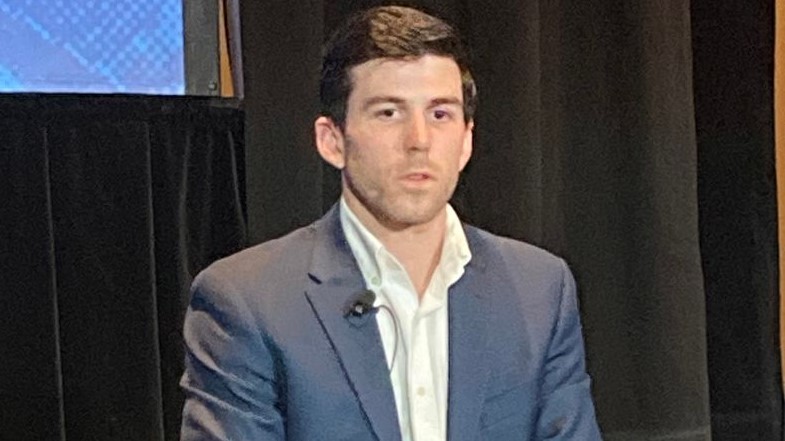Competition to heat up over recycled PET supply
main text
Competition to heat up over recycled PET supply

Andrew Brown
National Harbor, Md. — Ladies and gentlemen, let's get ready to … recycle.
Andrew Brown uses professional wrestling terminology to describe the upcoming collision he sees taking place between the bottle and the textile companies over recycled PET supplies.
"The two industries are going to go head-to-head," he said at the Plastics Recycling Conference in National Harbor. "A battle royale."
Recycled content use commitments by made by both packaging and textile makers have set the stage for more competition in an increasingly tight market.
"Clearly, there is going to be a bit of a challenge to hit the total demand," said Brown, head of plastics and recycling at Wood Mackenzie, a research, analytics and consulting firm. "I think it's going to be all about understanding the supply chains and where you can source material from."
Brown sees a future where used PET bottles will move more toward packaging applications. "I think over the next several years that continues to become more prominent, and the textiles industry has to figure out their circular value chain."
"On the textile side, you have textile-to-textile recycling, which hopefully is going to play an increasing role," Brown told the conference crowd.
"As the bottle industry goes more bottle-to-bottle, the textiles industry is now looking at how can we take that value chain and essentially make it more circular. Rather than textiles ending up in landfills, convert them back into the polymers that we need to produce them in the first place," Brown said.
The textile industry includes both apparel and carpeting,
Brown told the crowd that there is about 10 percent use of recycled PET in the packaging sector while the apparel side uses about 20 percent. He estimated that just doubling those numbers will require 15.4 million tons (14 million metric tons) of demand over the next two to three years.
"That's a massive number," he said. "Where is that going to coming from? There are a few options available to the industry."
Brown said he sees three pathways to help boost supply. "The first option available for the industry is to raise collection rates, right? If we want to secure more supply, we have to collect more material. What are the ways we can improve collection rates. Legislation is clearly No. 1," he said. "Domestically we have yet to achieve significant momentum towards a cohesive national standard or legislative action that will significantly improve domestic collection rates."
He pointed to the European Union's Packaging and Packaging Waste Directive and said he believes that strategy, if applied similarly here in the U.S., could increase collection rates by 10-15 percent. States pursuing extended producer responsibility rules could push the needle up another 5 percent or so in the United States.
"Other options available are looking at new technologies. There are several of these new technologies that are exciting to watch as we look at how the industry is evolving," he said. They include digital watermarking, advanced robotics, near-infrared sorting and artificial intelligence.
These types of advanced sorting improves yields and bale quality. "We expect that yields are headed higher, thankfully, over the course of the next three years as many of these systems are implemented. We think that yields could increase by something like 5 percent," he said.
But more is still needed, Brown said. And that's where chemical recycling comes in.
"Chemical recycling, advanced recycling ... plays a significant part not by 2025, but over the course of the next 10 or 20 years in unlocking supply to meet these targets that have been set," he said.
"The question that still is front of mind, is this still enough?" he said. "There's more that's still needed."
To meet that demand, Brown predicts that imports will increase in the years ahead. But that raises a conundrum for those using that material.
Increased recycled PET use is often driven by companies wanting to lower their carbon footprint. But importing material means higher greenhouse gas emissions due to transportation when compared with using domestic product, he said.
"In our minds we should continue to look for options domestically to secure material to both reduce carbon intensities and also reduce the plastic waste footprint," Brown said.
Source : https://www.plasticsnews.com/news/competition-heat-over-recycled-pet-supply
Edit : HANDLER
